You’ve probably heard the phrase “say it with flowers,” but how specific can you get with what you say? The “language of the flowers” was first formalized in the early 19th century and went on to achieve widespread imitation and mutation over the course of the next two centuries.
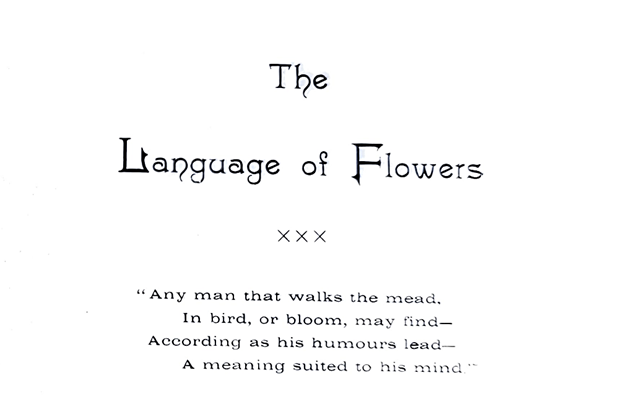
Excerpt from The Language of Flowers by A. Lange (Chicago: S.D. Childs)
Though there is scant historical evidence it was ever used by couples as a practical “language” to communicate precise messages, such as “Meet me this evening in the town square,” the romance of that idea captured the public’s imagination. Throughout the latter half of the 19th century, there was a huge demand for published “floral dictionaries” promising to help decode messages hidden in bouquets. In these guidebooks, each flower is assigned a specific sentiment and thus by composing a floral arrangement, one might hypothetically convey complex thoughts and messages to the intended recipient.
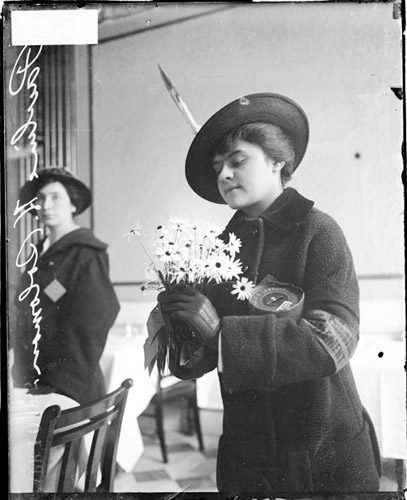
Pauline H. Solomon holding a bouquet of flowers, standing in a dining room in Chicago, 1915. DN-0064300, Chicago Daily News Collection, CHM
The main obstacle to the language of the flowers becoming universal was the fact that there were no agreed upon meanings for every flower. The meanings were often arbitrarily pulled from poetry or the medicinal uses for certain plants, so while one dictionary might list the white rose’s meaning as “I am worthy of you” another might say it stood for “silence.” Florists in particular profited off selling the romance of the language of the flowers to their customers and continued making and selling floral dictionaries long after mainstream publishing interest in the genre declined in the 20th century.
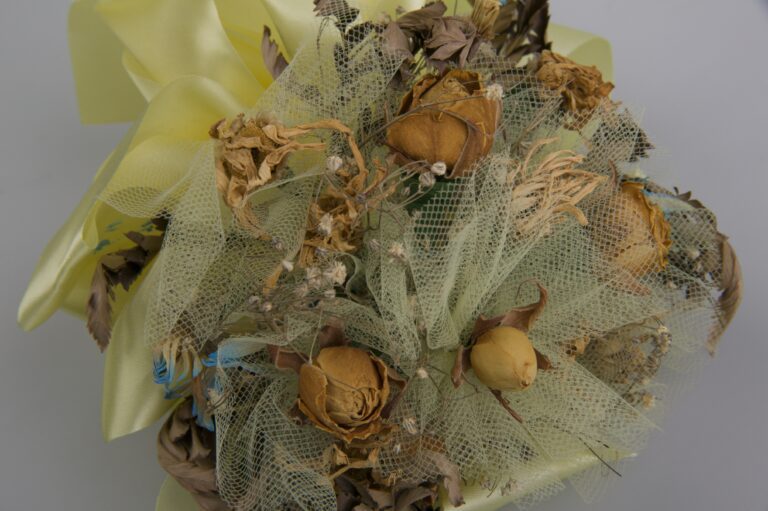
Wedding bouquet, dried flowers, no date. CHM, ICHi-054714
One Chicago florist who published such a dictionary was August Lange, who worked in the floral industry from age 13 until he passed away at age 73 in 1942. His shop near the Palmer House was a Loop staple for 55 years, where he brought the practice of importing orchids from Canada to Chicago (Chicago Daily Tribune, March 29, 1942, p. 18). As was common with floral dictionaries, Lange’s The Language of Flowers includes poetry about flowers, as well as an index of flowers and their associated meanings.
Chicago’s official city motto is urbs in horto or “city in a garden,” and the Richard M. and Shirley H. Jaffee History Trail at the Chicago History Museum is one of the many gardens that helps the city fulfill that motto. See which ones you can spot and decode their historical sentiments using the guide below!
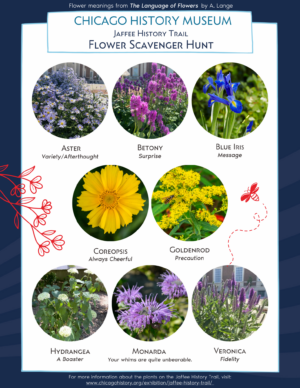
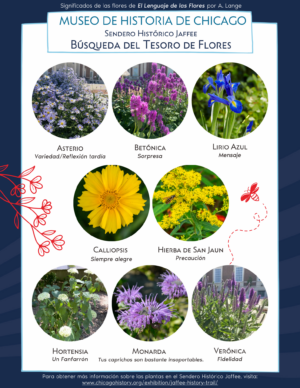
Download Jaffee History Trail Flower Scavenger Hunt Here
Further Reading
- Read The Language of Flowers by A. Lange here.
- See what native flora appear on the Jaffee History Trail.
- Beverly Seaton, The Language of Flowers: A History (Charlottesville: University of Virginia Press, 2012).
- “August Lange, Florist in Loop 55 Years, Dies: Funeral Rites to be Held Tomorrow Afternoon.” Chicago Daily Tribune (1923–1963), March 29, 1942, p. 18. Accessed March 14, 2024.
- George Neville Jones, Flora of Illinois: Containing keys for identification of flowering plants and ferns, 3rd (Notre Dame, IN: University of Notre Dame Press, 1963).